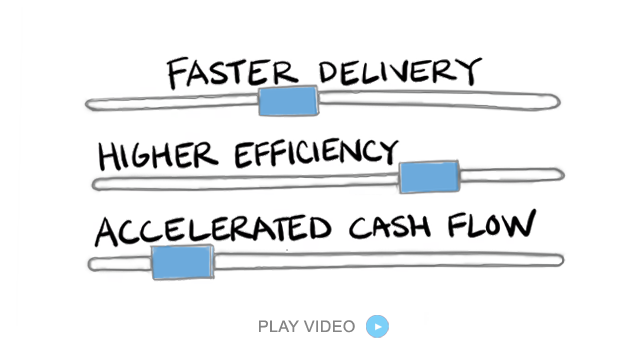
Hybrid Production Models: Enhancing Efficiency in Packaging Manufacturing
Production planners in packaging facilities face mounting pressures to optimize efficiency, reduce costs, and meet increasingly diverse customer demands. Hybrid production models—a blend of make-to-stock (MTS) and make-to-order (MTO) strategies—are emerging as a powerful solution to balance these competing priorities.
By leveraging advanced technologies like PlanetTogether integrated with enterprise systems such as SAP, Oracle, Microsoft Dynamics, Kinaxis, or Aveva, packaging manufacturers can achieve new levels of flexibility, precision, and responsiveness.

The Case for Hybrid Production Models
The packaging industry is characterized by high variability in demand, short lead times, and the need for customization. Traditional MTS or MTO models often fall short in addressing these complexities:
MTS ensures that standard products are readily available but can lead to excessive inventory costs and obsolescence.
MTO minimizes inventory risks but struggles to meet short lead times, especially during demand surges.
Hybrid production models combine the strengths of both approaches, allowing facilities to stock common components while manufacturing customized products to order. This dual approach can reduce waste, improve delivery times, and enhance customer satisfaction.

Challenges in Implementing Hybrid Production Models
While the benefits are compelling, implementing hybrid production models is not without challenges. Key obstacles include:
Complex Planning Processes: Balancing inventory levels with production schedules requires meticulous coordination.
Demand Forecasting Accuracy: Hybrid models rely heavily on accurate demand forecasting to avoid underproduction or overstocking.
Integration of Data and Systems: Seamless communication between production planning, inventory management, and customer order systems is critical.
This is where advanced planning and scheduling (APS) tools like PlanetTogether, integrated with ERP systems such as SAP or Oracle, play a crucial role.

The Role of PlanetTogether in Hybrid Production Models
PlanetTogether’s APS platform provides the tools needed to streamline and optimize hybrid production models. When integrated with enterprise systems like Microsoft Dynamics, Kinaxis, or Aveva, it offers several critical capabilities:
Real-Time Visibility: Gain a comprehensive view of inventory levels, production schedules, and order statuses to make informed decisions quickly.
Scenario Planning: Evaluate different production scenarios to balance MTS and MTO strategies effectively.
Demand-Driven Scheduling: Align production schedules with real-time demand forecasts, minimizing the risk of stockouts or excess inventory.
Constraint-Based Planning: Account for constraints such as machine capacity, labor availability, and raw material supply to ensure realistic and achievable production plans.
KPI Tracking and Reporting: Monitor key performance indicators like lead times, on-time delivery rates, and inventory turnover to measure the success of hybrid production strategies.

Benefits of Integration with ERP Systems
Integrating PlanetTogether with robust ERP systems amplifies its impact. Here’s how integration with platforms like SAP, Oracle, Microsoft Dynamics, Kinaxis, or Aveva enhances hybrid production models:
Unified Data Platform: Ensure that all departments—from production planning to procurement and sales—work from a single source of truth.
Automated Workflows: Automate routine tasks like order processing, inventory updates, and schedule adjustments, freeing up planners to focus on strategic decision-making.
Enhanced Forecasting: Leverage ERP-powered analytics to improve demand forecasting accuracy and align production plans with market trends.
Improved Collaboration: Facilitate better communication between teams and departments, enabling faster response to changes in demand or production capacity.
Scalability: Support growth and complexity as your operations expand, ensuring that your hybrid production model remains effective.

Practical Steps to Implement a Hybrid Production Model
Transitioning to a hybrid production model requires careful planning and execution. Here are practical steps for production planners in packaging manufacturing:
Analyze Current Operations: Conduct a thorough assessment of your existing production processes, inventory levels, and demand patterns to identify areas for improvement.
Segment Products: Categorize products based on demand variability, lead times, and customization requirements to determine which should follow MTS or MTO strategies.
Invest in Technology: Implement advanced planning tools like PlanetTogether and integrate them with your existing ERP system to enable real-time data sharing and optimization.
Train Teams: Ensure that your planning, production, and inventory teams are trained to use new tools and processes effectively.
Monitor and Adjust: Continuously track performance metrics and adjust your strategy to respond to changing market conditions or operational challenges.
For production planners in packaging manufacturing, hybrid production models represent a compelling path to greater efficiency, flexibility, and customer satisfaction. By leveraging tools like PlanetTogether and integrating them with enterprise systems such as SAP, Oracle, Microsoft Dynamics, Kinaxis, or Aveva, manufacturers can overcome the challenges of hybrid production and unlock new opportunities for growth.
The time to act is now. Evaluate your current production strategies, invest in the right technologies, and embrace the hybrid production model to stay competitive in an increasingly dynamic market.
Are you ready to take your manufacturing operations to the next level? Contact us today to learn more about how PlanetTogether can help you achieve your goals and drive success in your industry.


























LEAVE A COMMENT